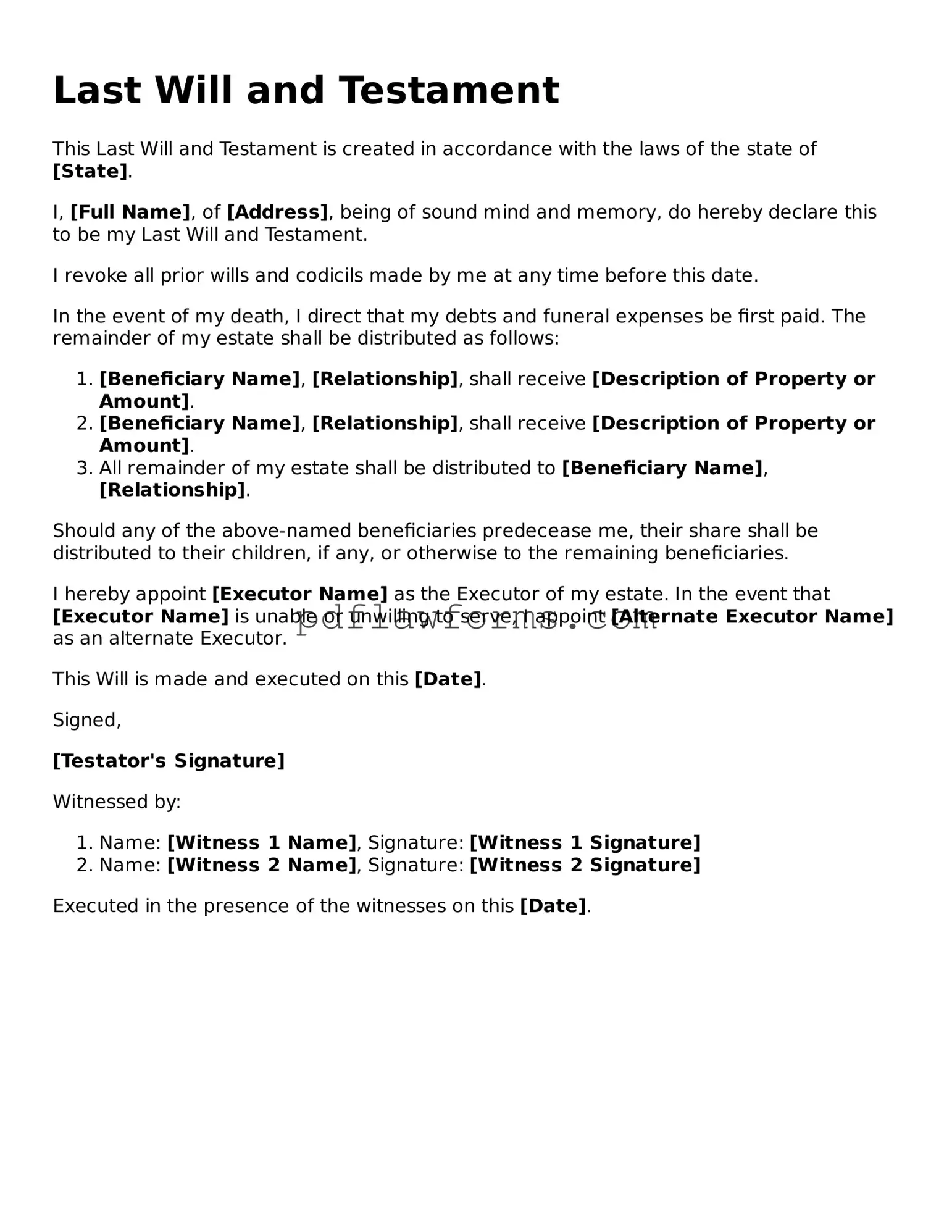Creating a Last Will and Testament is an important step in planning for the future. However, many individuals make common mistakes when filling out this form, which can lead to complications later on. One frequent error is failing to clearly identify the beneficiaries. It is essential to provide full names and, if possible, their relationship to you. Vague references can lead to confusion and disputes among family members.
Another common mistake involves not updating the will after significant life events. Changes such as marriage, divorce, or the birth of a child should prompt a review of the will. If these updates are not made, the document may not reflect your current wishes, leading to unintended consequences.
Many people overlook the importance of signing the will properly. A will must be signed in the presence of witnesses, and those witnesses should not be beneficiaries. Failing to follow these requirements can result in the will being deemed invalid.
In addition, individuals often neglect to include specific bequests. While many choose to leave their entire estate to one person, failing to specify items or amounts can create confusion. Clearly stating what each beneficiary will receive helps to avoid misunderstandings.
Another mistake is not considering the tax implications of the estate. Understanding how taxes will affect the distribution of assets is crucial. Ignoring this aspect can leave beneficiaries with unexpected financial burdens.
Some individuals also forget to appoint an executor. This person is responsible for ensuring that your wishes are carried out after your passing. Without a designated executor, the court may appoint someone who may not align with your intentions.
Furthermore, many people fail to store their will in a safe and accessible location. A will that cannot be found when needed can create delays and additional stress for loved ones. It is advisable to inform trusted individuals about where the document is kept.
Lastly, individuals may not seek legal advice when necessary. While it is possible to create a will without assistance, consulting with a professional can help avoid pitfalls and ensure that the document meets all legal requirements. Taking these steps can lead to a smoother process for your loved ones in the future.
